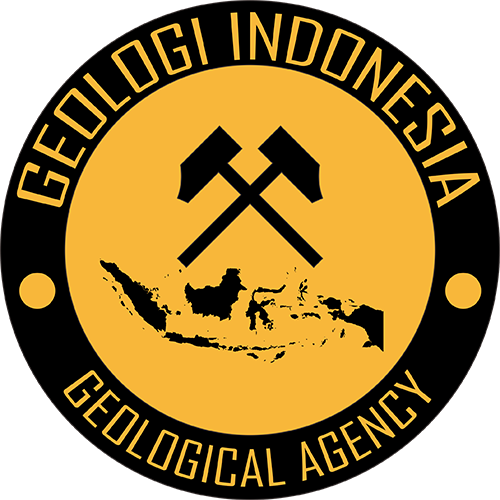Basin with Hydrocarbon Indication
Basin Status
Rifting Valley Passive Margin
Tectonic Setting
0
Area (km2)
0
Visitor Count
0
Likes
Prospectivity & Resources
of
Kendari Basin
Basin Capacity
Data based on
18 Oct 2024
Oil
N/A
MMBO
(Million Barrels of Oil)
Gas
N/A
TCF
(Trillion Cubic Feet)
Resources
Data based on
18 Oct 2024
Oil
Conventional N/A
Conventional N/A
MMBO
(Million Barrels of Oil)
Gas
Conventional N/A
Conventional N/A
TCF
(Trillion Cubic Feet)
Oil
Unconventional N/A
Unconventional N/A
MMBO
(Million Barrels of Oil)
Gas
Unconventional N/A
Unconventional N/A
TCF
(Trillion Cubic Feet)
Executive Summary
of
Kendari Basin
Description
Version
1
Published Date
20 Jan 2023
Uploaded Date
-
Photos
Some footage of Kendari Basin
Introduction
Preliminary details of Kendari Basin
This basin is located in the southeast of Sulawesi Island which is the result of the collision of the Southeast Sulawesi microcontinent with the Buton microcontinent.
Data based on:
20 Jan 2023
Exploration History
Detailed history of Kendari Basin
In this area there is only one well (Abuki-1 Well) and there is no hydrocarbon found (PERTAMINA-BEICIP, 1992).
Data based on:
20 Jan 2023
Regional Geology
Detailed regional geology of Kendari Basin
Data based on:
20 Jan 2023
Petroleum System
Detailed petroleum system of Kendari Basin
During the Mesozoic, the sedimentary and ultramafic rocks of this basin were the same as those of the Buton basin (PERTAMINA-BEICIP, 1992). Although no Paleogene deposits were found, Oligocene clastic sediments are thought to be in the deepest part of the Tertiary sediments. The Abuki-1 well shows the presence of limestone deposits with a thickness of 85 m above Paleogene – Early Miocene ultramafic and metamorphic rocks. Miocene deposits are indicated by the Langkawola Formation which consists of alluvial-fluvial conglomerate deposits, coarse-fine sandstones and claystones. These deposits can be correlated with the Tondo Formation in the Buton Basin. During the Pliocene, the Boepinang Formation consisted of sandstone deposited in an inner-outer sublitoral environment containing calcareous claystone deposits that wedged downwards. At the same time, the Eemoiko Formation consists of shallow marine reef limestones deposited in deep sublitoral areas. Shale deposits and flysch sandstones of Pandua and Alangga Plio – Pleistocene are exposed along the basin boundaries with material sources originating from the west.The source rock found is Triassic shale. As found in the Buton Basin, but the shale in this Basin are over mature. Other potential source rocks are lacustrine/marine shale deposits in the Oligocene graben and Miocene claystone. The claystone is estimated to be of good quality but possibly immature and gas prone. This source rock is thought to have kerogen types II and III. The limited area of the basin is thought to be one of the factors that makes it difficult for hydrocarbons to be trapped in the trap (PERTAMINA-BEICIP, 1992).Potential reservoirs are Early Miocene – Pliocene carbonates and associated reefs such as the Molawe prospect. Oligocene and Miocene clastic sediments are expected to develop as reservoirs in this basin (such as deep-sea fan turbidite sediments or sandstones in shallow deltas). Surface manifestations found in this area are gas seeps found in Roda Village, Kolono indicating that the petroleum system is still active in this area. As for the hydrocarbon traps in this basin are stratigraphic and structural.In the Oligocene, play occurs in sandstones through stratigraphic traps in the form of fan deposits. Then during the Miocene, play occurred in the sandstones of the Langkawola Formation through structural traps in the form of faults (at the Abuki-1 Well). In addition to fault traps, play in the sandstones of the Langkawola Formation also occurs in three different types of traps, namely horizontal fault traps (anticline faults), stratigraphic traps in the form of deep-sea fan turbidite deposits and stratigraphic traps in the form of sandstones with pinch-out and lens structures. Everything happened in the Miocene. At this age, play is likely to occur through reef traps.In the carbonate of the Eemoiko Formation (Pliocene), play is identified as occurring in reef traps in the form of carbonate build-ups (such as the Molawe prospect) and in the carbonate of the Eemoiko Formation in the form of shear fault traps associated with folds producing shallow sea carbonate.
Data based on:
20 Jan 2023
Resources
Detailed resources of Kendari Basin
-
Data based on:
20 Jan 2023
Petroleum System Chart
of
Kendari Basin
Description
Version
1
Published Date
20 Jun 2023
Uploaded Date
20 Jun 2023
Petroleum System Chart
Petroleum system chart to Kendari Basin
Montage
of
Kendari Basin
Description
Version
-
Published Date
-
Uploaded Date
-
Montage
Detailed montage of Kendari Basin
Reports & Publications
of
Kendari Basin
Description
Version
-
Published Date
-
Uploaded Date
-
Reports & Publications PDF
Detailed reports & publications of <-?= $basin->name; ?> Basin
Archives of Report & Publication
| Date | Report Description | Version | Doc | |
| - | No Data | - | - | - |
| Date | Publication Description | Version | Doc | |
| Oct 02, 2022 | Jurnal Cekungan Kendari Tahun 2022 | 1.0 | Download | |
| Oct 03, 2021 | Jurnal Cekungan Kendari Tahun 2021 | 2.0 | Download | |
| Oct 04, 2020 | Jurnal Cekungan Kendari Tahun 2020 | 2.0 | Download | |
| Oct 06, 2019 | Jurnal Cekungan Kendari Tahun 2019 | 2.0 | Download | |
| Oct 07, 2018 | Jurnal Cekungan Kendari Tahun 2018 | 2.0 | Download | |
| Oct 06, 2017 | Jurnal Cekungan Kendari Tahun 2017 | 2.0 | Download | |
| Oct 07, 2016 | Jurnal Cekungan Kendari Tahun 2016 | 2.0 | Download | |
| Oct 06, 2015 | Jurnal Cekungan Kendari Tahun 2015 | 1.0 | Download | |
| Oct 03, 2014 | Jurnal Cekungan Kendari Tahun 2014 | 2.0 | Download | |
| Oct 03, 2013 | Jurnal Cekungan Kendari Tahun 2013 | 2.0 | Download | |
| Oct 05, 2012 | Jurnal Cekungan Kendari Tahun 2012 | 2.0 | Download |


